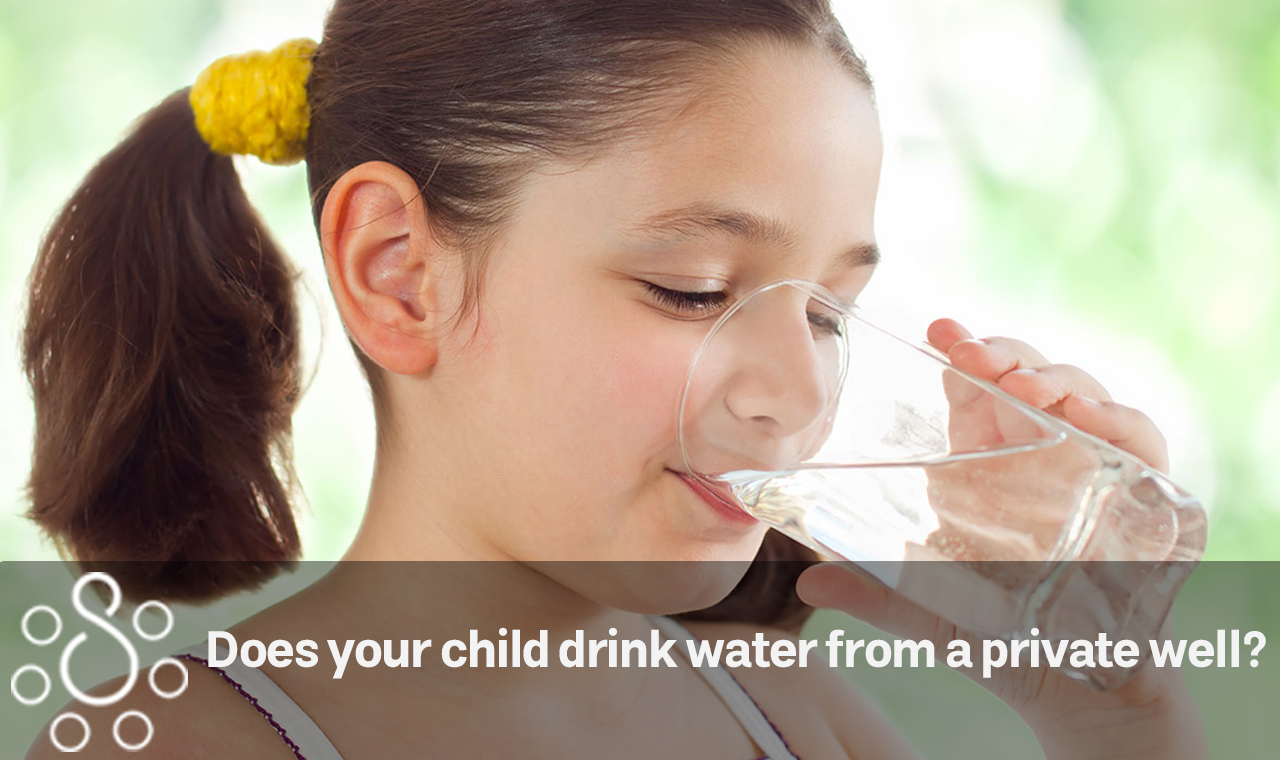Drinking private well water provide water for about one-sixth of all homes in the United States of America. These wells may get polluted with pollutant chemicals or pathogenic organisms, which can result in disease and death. Despite the fact that the United States Environmental Protection Agency and all states provide recommendations for the design, maintenance, and testing of private wells, there is minimal federal or state regulation. Well owners, with a few exceptions, are solely responsible for the upkeep of their own wells. Drinking well water is also permissible for children in child care and while traveling. The illness that might arise from youngsters ingesting polluted water can be life-threatening. It is recommended in this policy statement that wells supplying drinking water to children be inspected, tested, and remedied in accordance with current standards. Follow this article; we are going to explain well water and the effects of drinking private well water without treatment.
Does your child drink water from a private well?
Private wells supply water to approximately 15% to 20% of all houses in the United States of America. Private wells are exempt from federal rules imposed by the United States Environmental Protection Agency (EPA) and are subject to very minor state oversight. According to the Centers for Disease Control and Prevention, coliform contamination of private wells in private residences in Iowa reached as high as 27 percent in the 1990s.were 31 recorded waterborne illness outbreaks in the United States in 2005–2006, the most recent years for which data is available.
Twenty of the outbreaks were linked to drinking water, with eight of those outbreaks linked to groundwater sources, which were often private wells. 458 people were sick as a result of these. The etiology of five of the outbreaks has been determined: one was caused by Campylobacter, three by norovirus, and one by Hepatitis A. Waterborne diseases are unquestionably underreported and underrecognized in the United States. So, drink private well water can be safe.
related article: What Is a Toothbrush Sanitizer?
Water from the ground and wells
Groundwater is defined as water that exists below the surface of the soil and above impermeable bedrock. It is referred to as being in an aquifer when groundwater gathers in and saturates relatively permeable fractured bedrock and soil, as opposed to being in a reservoir. An aquifer is defined as a depth below which the soil and cracked bedrock (i.e., the aquifer) are completely saturated with water. The water table may fluctuate from one season to the next and from one year to the next. Having a well that is deep enough to draw water from the aquifer under nearly all weather conditions is essential for ensuring that water is consistently available. Precipitation and runoff replenish aquifers from above, bringing them back to life.
Various well types
Wells dug by hand are typically shallow holes 10 to 30 feet deep, lined with rock, brick, tile, or concrete, and equipped with a pump, either in a nearby pump house or in the home itself. Dug wells are often found on older house sites as artifacts of a bygone era. They are simple to contaminate and unreliable throughout the majority of the United States. In driven wells, the pipe is pushed through gravel or sandy soil to reach the water table. These wells are likewise shallow, often just 50 feet deep, and the pump is either positioned at the top of the well or inside the residence. Because of their shallowness, driven wells are still relatively simple to pollute, but they may be built quickly and cheaply provided the geological conditions are favorable for their installation.
Wells dug by hand or pushed by a horse are often used as water sources by campers and vacation houses. Wells that have been drilled reach bedrock at depths ranging from 100 to 400 feet. The bottom of the majority of dug wells has an electric submersible pump. As a result of soil filtration on the way down and the fact that the water is reasonably secure from pollution while in the aquifer, water from deeper wells is less likely to be polluted. So, digging wells and drinking private well water can be disease free.
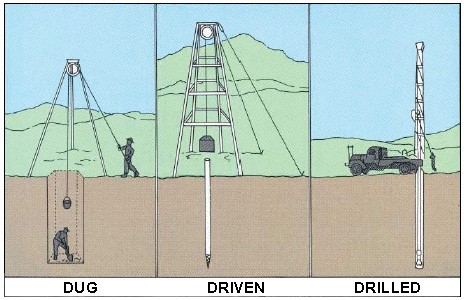
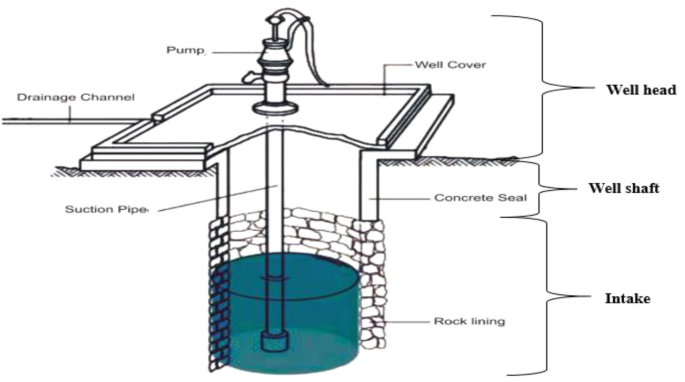
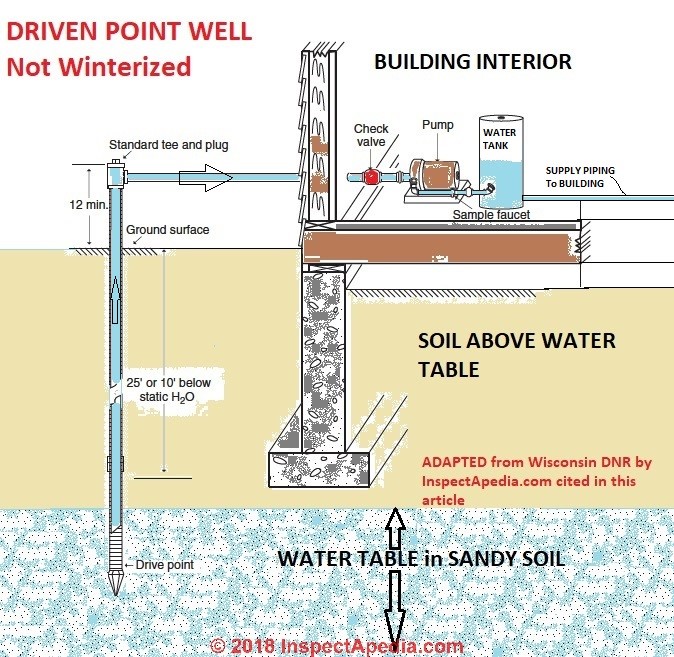
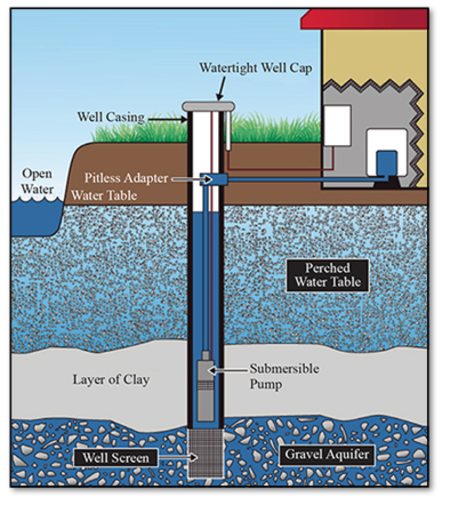
The composition of well water
Chemicals
Well water’s chemical composition varies depending on the geography, underlying geologic formation, and environmental contaminants, and it might be hazardous, useful, or just undesired depending on the situation. Iron, on the other hand, should not be present in drinking water due to its toxic effects. Many different compounds, some of them potentially dangerous, may pollute well water, and their presence or absence might be attributed to naturally occurring geologic processes or dispersion from industry, farms, or commercial operations, among other things.
The presence of nitrates poses a particular threat to the health of babies. In the United States, the most frequently encountered pollutant chemicals are volatile organic compounds and pesticides, which may be detected in more than one-third of wells, but at levels that are below federal public water regulations in most cases. Many commercial sources will test the hardness of the water as well as the iron and manganese content.
Water becomes hard as a result of the presence of calcium and magnesium carbonate. The presence of hard water is not harmful, but it may need treatment in order to avoid precipitation from blocking pipes and causing other difficulties, such as coating electric hot water heater components and causing them to fail. Manganese and iron may appear as rust-colored to black specks on clothes, pipes, and fixtures, and they can stain these items. Therefore, so-called iron and manganese bacteria may thrive in this kind of water and create apparent black slimy colonies of microorganisms, which can block pipes and faucets on occasion.
related article: How UV-C LED Light Can Help your Rental Customers
Microorganisms
Microorganisms, such as bacteria, viruses, fungus, and parasites, may pollute ground water, which can then contaminate the water that feeds wells. This organism’s primary source is fecal material from animals and people, as well as other sources. Analysis of well water at the point of use for “total coliforms” is the most prevalent method of determining whether or not water has been contaminated by feces. A combination test for fecal coliforms and/or Escherichia coli may be conducted in conjunction with total coliforms and utilized for yearly bacterial testing when such tests are made available.
Even while the lack of coliforms is a strong indicator that considerable fecal contamination is not present, it is not conclusive. It is recommended that samples that include any coliforms be retested to ascertain whether they are fecal coliforms; specimens that test positive for E. coli or other pathogens should be checked for the presence of additional infections. The majority of the information on pathogens found in well water has come from research into waterborne epidemics. In the United States, the majority of waterborne outbreaks are connected to noncommunity water systems, mostly private or communal wells, as opposed to municipal water systems.
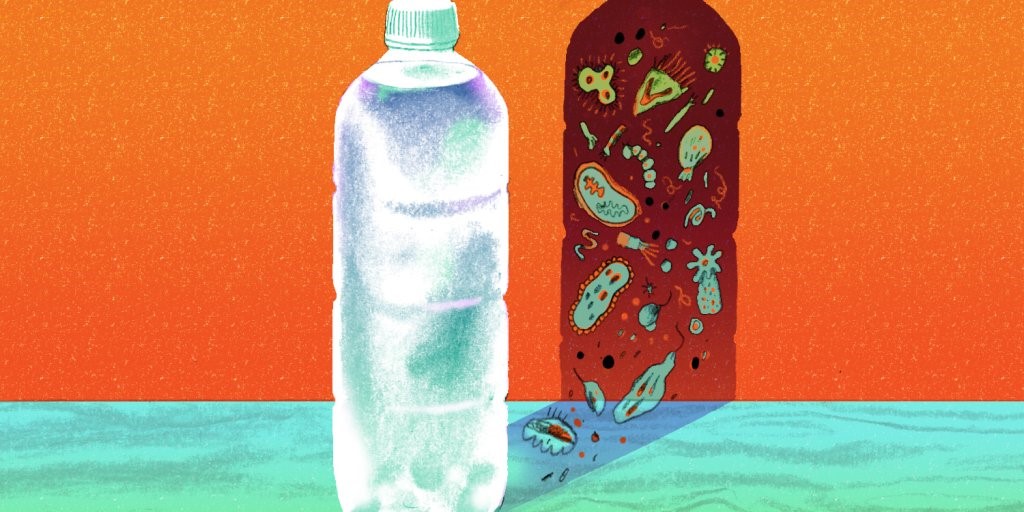
Mitigation Bacteria and chemicals
If bacterial contamination is found, the water system must be treated. The first step is to evaluate the well for structural flaws that may have assisted in the pollution. Initially, “shock chlorination,” employing chlorine concentrations 100–400 times higher than municipal water sources, should be undertaken. The homeowner may do this using household bleach, but it is best to contact the health department or other experts first. Most alternative treatment methods require a qualified practitioner. If bacterial contamination continues despite continual cleaning, natural or structural causes may be at play, which the well owner cannot control. This may require drilling a new well. Filter or plug the polluted well.
Chemical pollutants are investigated for possible pollution on the homeowner’s or neighbor’s property, such as nitrogen-containing fertilizers, pesticides, or fuel tanks. If the well is still polluted or the contaminants are naturally occurring, then nearly any chemical or biological pollutant may be filtered out or treated. However, therapy may become difficult, costly, and/or require expert maintenance. Therefore, drinking private well water without treatment can be dangerous.
Diagnostic recommendations
Pediatricians should inquire whether a family uses water from a private well at home, on vacation, while traveling, or in child care. This is crucial for new parents. The tests are described below, along with some reasoning for their usage.
related article: Does using the mechanism of UV light on food items kill the coronavirus?
Routine exams
This includes testing for coliform, nitrate, inorganic (total dissolved solids, iron, magnesium, calcium, chloride), fluoride, radon, and lead. It is advised that wells that were shock-chlorinated after drilling be retested for coliforms. Request a site plan showing the well, water pipes, septic tank, and field. An examination should include the well and septic field. Ask the seller or landlord what filters, softeners, or other devices are in the water supply pipes. If feasible, try a vacation house or camp with a shallow well and no other water supply. Avoid it for newborns and for anybody with a damaged immune system.
Using bottled water for drinking and cooking may be safer and more convenient for a short visit. Microorganisms may be acquired from untested well water by boiling it and filtering it. Boiling water means bringing water to a full boil for 1 to 3 minutes, although suggestions vary. Filtration lets viruses and Giardia cysts pass. It is difficult for consumers to determine the accuracy and quality control of coliform and nitrate test kits. Thus, home testing is not advised for families with infants who need to know if the nitrate content is below 10 mg/L.
School childcare
Rural and suburban child care may use private well water. If in doubt, parents should ask about the child care center’s water supply. If the water is from a well, parents should inquire about the frequency and results of nitrate and coliform testing. If current findings are unavailable, babies should be provided bottled water until the well is deemed safe.
Schedule Tests
Every spring, the well should be inspected for mechanical issues. annual coliform and nitrate tests for well water. Exceptions to the annual testing rule include: if there is a chemical spill nearby the well, or if someone in the home is pregnant or breastfeeding, or if there are unexplained illnesses, or if harmful contamination is found in the neighbors’ well water.
Because of the technical complexity (filtering vast quantities of water) and cost of routine testing for Giardia and Cryptosporidium However, the following cases warrant testing for parasites: A well at the foot of a hill or shallow (prone to runoff) is a well in a rural location where animals graze. Like Giardia and Cryptosporidium, E. coli O157: H7 has risk factors. In these cases, keep an eye out for E. coli O157: H7 infection or clinical signs.
Because most of the information regarding possible pollution is local, national sources like the EPA’s Web site regularly advocate contacting local experts. The yearly nitrate and coliform tests serve as a reminder to report any water-quality issues to the health department so that drinking private well water will be risk-free.
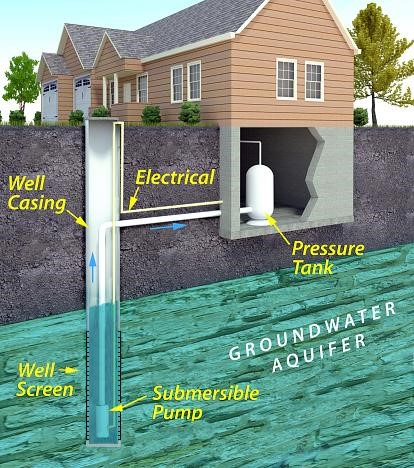
Occasional Testing
Unknown or fluctuating nitrate amounts due to a new newborn or kid under 1 year old in the household should prompt testing. Boiling water does not eliminate or concentrate nitrate, even for a breastfed baby.
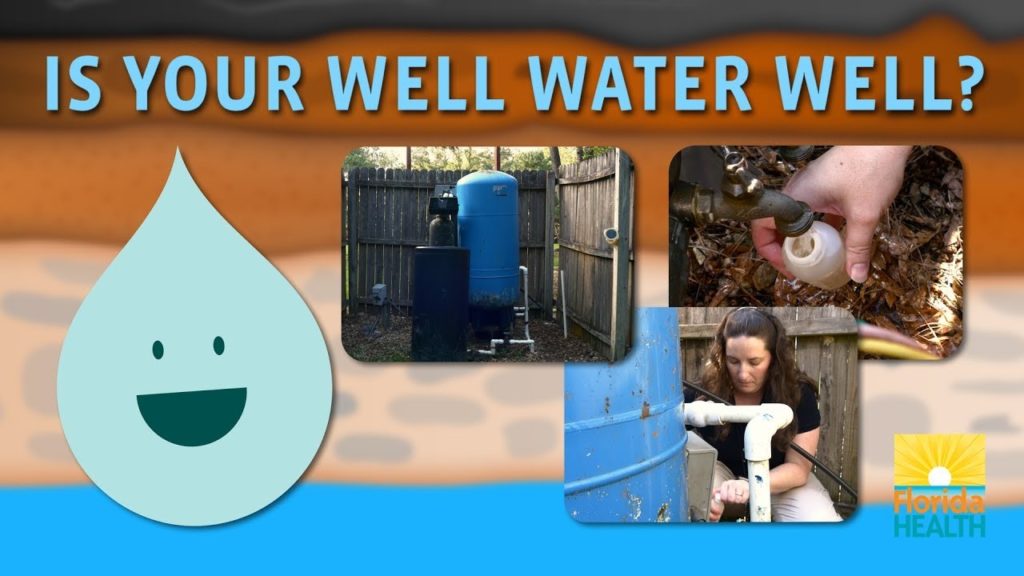
Well Damage or Disturbance
If a new submersible pump is installed, if the well is damaged by a fallen tree, a car accident, a flood, or a landscaping cut, the well should be tested and shock-chlorinated.
Sentinel Diseases
Every case of gastroenteritis does not need a health test or an inquiry. However, if numerous people have gastroenteritis, or if the gastroenteritis is caused by a bacterium or parasite found in the well water due to feces contamination, then pathogen testing is required. Methemoglobinemia in a newborn drinking well water necessitates nitrate testing. Testing for lead in well water necessitates testing for lead in children who live in houses built after 1978. Contaminated well water should be considered in the examination of uncommon or cryptogenic illnesses. Supplements are required if a child’s drinking water has little or no fluoride. From 6 months to 3 years of age, children need fluoride supplementation if the water contains less than 0.3 ppm. Supplementation for children aged 3 to 16 is advised if water fluoride levels are less than 0.6 ppm. To avoid dental fluorosis, children under the age of nine should not drink water with a fluoride content greater than 2 ppm. Learn about local well water issues. Encourage water safety measures to safeguard children’s health.
related article: What Sanitizer Is Best For You? Differences in UV Sanitizer Explained
Suggestions for the government
Local governments should make information regarding groundwater available. Recommendations for testing should be readily accessible via phone or the Internet. The public should be alerted and informed if water pollution becomes a public health hazard. Local governments should explore mailing or other active ways of conveying their rules and recommendations about well testing to homeowners with approved wells that may be impacted by the new usage. The tests for the safety and health of households drinking private well water should be simple, quick, and economical. Small community wells that serve just a few families are occasionally excused from the testing needed for bigger systems. While this is acceptable, it should not be habitual, and any exception should be justified. A private well’s drinking water should be tested for contaminants including coliforms, nitrate, fluoride, and any other local issue before being sold.

